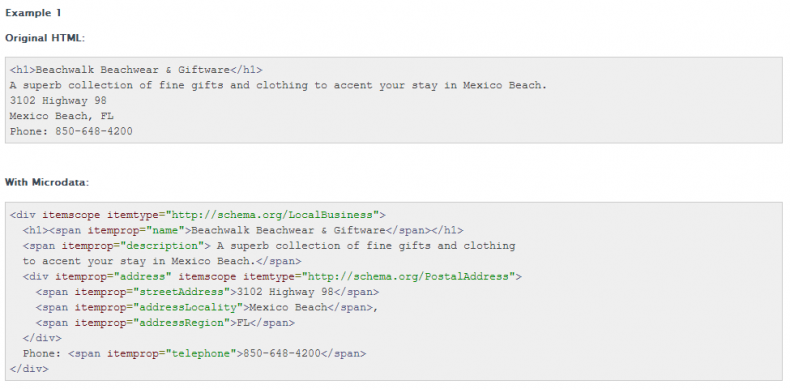How to Use Schema Markup for Local SEO
One of the most underutilized tools for local SEO is schema markup. Schemas are basically a set of html tags that can be used to display important information in search engine listings such as business location, reviews, prices, and opening hours. Using schemas is so important because they help display correct business information, increases search engine clickthrough rates, and increases conversion.
There are many different schema markups that can be used for local business listings. Which ones should be used depend on the type of business, but there are a few that will help all local listings. The most important is probably the schema that sets up the NAP (name, address, phone) for a business because it helps the search engines identify this data and ensures that the right information is displayed.
To use a schema markup properly, it’s important that it is placed near the main content. For example, if the NAP information is placed near the top of the code, the schema code should be added before the actual text content that has the NAP information. Here is an example of how it should be used. Pay attention to the original HTML and see how it is different with the schema tag.
Some of the schemas that can really increase the effectiveness of local SEO are ratings, reviews and testimonials. Ratings influence visitors to click on local businesses that are scored higher. Reviews are used to show how many people have left feedback. The more reviews a listing has is basically a reflection of how popular a business is. Testimonials can help create trust and boost conversions. They will appear as text snippets in the listings with the description.
Other important schema markups that help include hours of operation, payments types accepted and breadcrumb navigation. Breadcrumb navigation in a schema markup particular is that many local websites neglect. It improves click-through rates because it provides options for consumers to find what they’re looking for.


For example, a local restaurant site may have their top domain listed in the search listings. By using breadcrumb links that point to different pages such as their menu, directions to the location, and reservations, the restaurant listing will invite more clicks. Breadcrumb links will also lower abandon rates.
In summary, using schema markup can increase the effectiveness of local SEO in many different ways. A list of schemas that can be used can be found at http://schema.org/LocalBusiness. Which schema markups you use will depend on the type of business and what information will be most valuable to your audience.











Excellent information on schemas, Gary. SEO is all about helping search engines understand your website better, and that’s what schemas do. So they really should be a fundamental part of every web page, and they are relatively easy to include. Every little thing counts in Local SEO, and schemas will definitely help.